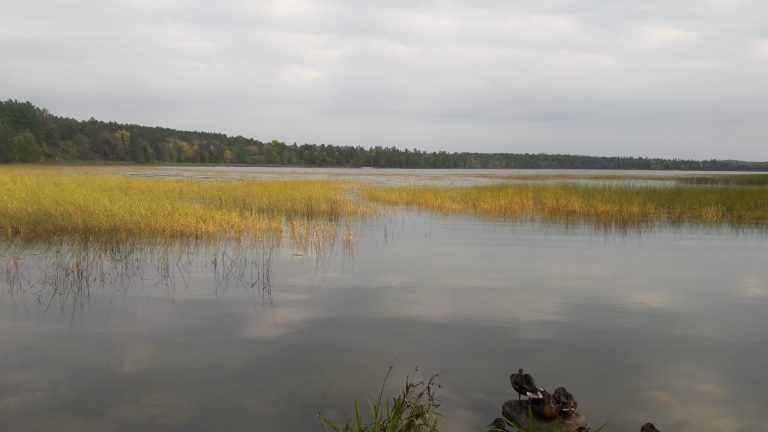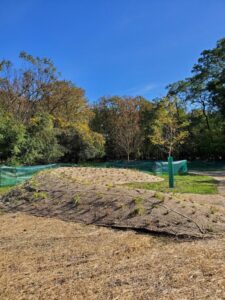Effective collaboration in the context of this project is something that I think we need to continually negotiate and must center primarily on relationships—accounting for our own positions within those relationships and with our research, and asking questions about how best to enact those relationships.
Bonnie Etherington
Confluence/ Collaboration and Trans-Indigenous/Relationality
Bonnie Etherington
Three cultures
Choctaw-Biloxi, Louisiana Creole, and Creek
woven into my Grandfather –
his mother, my Great Grands.
Three is a sacred number for us:
three sisters, three worlds.
Three.
The number of strands it takes to weave.
Three.
The waters of Louisiana:
seawater
fresh water
brackish water.
— RAIN PRUD’HOMME-CRANFORD AND CAROLYN M. DUNN
I come to our Humanities Without Walls project as a Pākehā (non-Indigenous) person originally from New Zealand. My main context for the Mississippi as a child was learning how to spell it in an international elementary school in Indonesia, where the children were from many different countries but the curriculum was all American. We learned nothing about the Mississippi’s Native histories. When my partner and I moved to Illinois for graduate school we drove from California. I knew that when we crossed the Mississippi we would be in Illinois. For me, then, the Mississippi River signaled the beginning of my graduate student life and the joining of that life with my ongoing research interests in waterways as sites of comparative Indigenous histories and relations. My primary research focuses on contemporary Indigenous literatures of the Pacific, which may, at first, seem distant from the Mississippi. However, all oceans are ultimately connected and the shipping routes of corn and grains downstream that are then exported to major markets like China, the transport of oil and other petroleum products upstream, the increasing ambiguity of where the river ends and the ocean begins in Louisiana, and the growing dead zones in the Gulf of Mexico caused, in part, by nitrates from fertilizer runoff that travels to the ocean via the Mississippi, suggests that the histories and futures of these large bodies of water are very much entangled with each other. The following keyword pairs are words that kept coming up for me through the project’s emphasis on these kinds of intermingling.
Confluence/ Collaboration
As a methodological term, collaboration asks that the members of our Humanities Without Walls team think about how we engage with Indigenous peoples invested in the river, and with each other as researchers, as artists, as teachers, and as members of university communities and communities beyond our institutions. It is also a term that necessitates thinking about how we engage with the river itself. The term “confluence” has been helpful for me when thinking about collaboration in the context of the river and its histories. Confluence refers to the merging of elements, or where rivers or tributaries meet. Collaboration, in its ideal form, does not mean a flattening of all the different things we bring to the table. We all come to the river project from different contexts and we also all bring different questions. As the river’s confluences tell numerous overlapping, converging, and accumulating stories that are connected but are also still very much about specific places and localities, so too does collaboration encompass the emphasis on multiplicity as well as specificity that I see emerging from the project.

The project has made clear that collaboration does not mean homogenization or wholesale access to Indigenous knowledge and practices. Though the grant that funds this project is called Humanities Without Walls, it has also taught me some of the values of walls. For example, when we talk about public lands or a public stretch of water, such as that found in a national park, collaborating effectively with Indigenous communities in those areas who have been disenfranchised from their lands and waters necessitates thinking about who the “public” is and how something is made public. An image I keep returning to is a webcam set up by the Minnesota Department of Natural Resources at the Mississippi headwaters, designed to provide visual access to the headwaters at all times. However, when we visited the headwaters the webcam added a layer of government surveillance to the space that made multiple members of the group uncomfortable. Its presence reinforces narratives of common accessibility perpetuated by settlers that erase histories of those lands and the violent ways in which the U.S. government often acquired them. Similarly, if we view collaboration as simply “working together” or ignore the fact that Indigenous expertise has so long been erased or violently taken by non-Indigenous researchers and institutions, then we risk doing further harm. Collaborating in a methodological context thus requires attending to how settlers construct narratives that divide land into public or private property, and how concepts of “wilderness” as devoid of humans erase Indigenous presences. It also requires analyzing how such narratives disrupt already existing relationships that people have with their lands and waters. It means continually thinking critically about how a term like collaboration has been and can be wielded in ways that actually do not serve Indigenous peoples.
Effective collaboration in the context of this project is something that I think we need to continually negotiate and must center primarily on relationships—accounting for our own positions within those relationships and with our research, and asking questions about how best to enact those relationships. Relationships are not created overnight and are necessarily very dependent on context. Depending on what we working on, this could mean relationships with local community members, it could mean interdisciplinary relationships within our own institution and across institutions, and so on. Collaboration can also disrupt the idea of humanities scholars working in isolation and foreground the value of de-centering ourselves as experts or authorities in our research. Collaboration allows for this de-centering in ways that might hopefully lead to more equitable and ethical research systems.
Relationality/ Trans-Indigenous
The poem “Grandma’s Zydeco Stomp Dance: A Patchwork Poem” by Rain Prudhomme-Cranford (Louisiana Creole/ Choctaw-Biloxi/ Mvskogean) and Carolyn Dunn (Tunica/ Choctaw/ Biloxi), expresses, for me, some useful ways of thinking about collaboration in terms of trans-Indigenous relationality as well, in the context of the river and its entangled histories. The poem is accompanied by an image of a quilt art piece called “Intertribal” made with multiple overlapping elements and colors by artist Tony Tiger (Sac & Fox / Muscogee). The form of the poem itself is a “patchwork” poem, or one assembled by different authors coming together to make one unified work. A note at the end of the poem describes how it embodies collaboration, as it is a “found poem” created by “piec[ing] together writing by Dunn and Prud’homme-Cranford to form a new poetic conversation in call and response.” The structure of call and response is explicitly relational, as each part of the conversation emerges in relation to another. Additionally, the poem is not simply a collection of their different writings but forms something new out of their previous writing.
The authors state that the “traveling tributaries” of the river include “long varied stories” of “colonization and conquest.” But these tributaries also include the Native and Black cultural histories that they see “woven” into the “Mississippi red, / blood arteries” and therefore also woven into their own genealogies: these are moving histories, dynamic, and explicitly storied. In their poem, “the waters of Louisiana” are woven “strands” of “seawater/ fresh water/ brackish water” which do not allow them to forget the histories of slavery, Native expulsion, and genocide. But their description of the river’s waters also foreground trans-Indigenous and Black histories of persistence. The waters “carry our Grandma’s stories” and the “rhythms” of her dance, which are portrayed as living and active, despite genocide and enslavement. The form of a patchwork poem, with its ability to incorporate different elements or “strands” into a whole, is able to hold all these histories and presents at once, in the same way that Dunn and Prudhomme-Cranford portray the river holding all these histories simultaneously with multiple forms of potential for vibrant futures.
In a workshop on mapping held during our latest Humanities Without Walls meeting, Citizen Band Potawatomi geographer and Northwestern Center for Native American and Indigenous Research artist in residence Margaret Pearce stated that all maps are about relationality. Nothing is independent on a map, and a map is essentially thousands of tiny decisions replicated across a page—it is an accumulation of meanings. Dunn and Prudhomme-Cranford’s poem suggests that relationality in the context of the Mississippi River Valley requires paying attention to the many different trans-Indigenous relationships it facilitates, which are not necessarily made visible on maps created by non-Indigenous cartographers. Chadwick Allen (Chickasaw) defines the term trans-Indigenous as a way to read connections among different Indigenous peoples in a way that is “together (yet) distinct” (xiii). In other words, the term offers ways to talk about the long-held and ongoing relationships Indigenous peoples have had and continue to have with each other without homogenizing them and without reading their relational acts within colonially-centered frameworks.
“together (yet) distinct”
— Chad Allen
The river and its tributaries allow for conversations about nodes and confluences of trans-Indigenous activism that it connects and facilitates. For example, in Chicago we heard from Indigenous futurist artist Santiago X (Coushatta and Chamoru) and his latest project to build two earthworks (mounds) at the bookends of the Northwest Portage Walking Museum for the Chicago Architecture Biennial in collaboration with the American Indian Center of Chicago.

This project involves collaborations between several Native organizations, artists, and community members based on shared interests in highlighting historical as well as ongoing Native American presences in Chicagoland, but it is also a project that arises specifically from Santiago X’s Coushatta heritage that includes mound builders. The project is additionally guided by the properties of the sites Santiago X chose for his mounds along the river, and the wider Mississippi Valley’s history as a place of numerous earthworks created by multiple Native Nations since time immemorial. Santiago X’s mounds and “Grandma Zydeco’s Stomp Dance” act then as representations as well as continuations of the trans-Indigenous relations that the Mississippi River Valley facilitates.
See Dunn and Prudhomme-Cranford’s poem here: https://www.worldliteraturetoday.org/2017/may/grandmas-zydeco-stomp-dance-patchwork-poem-rain-prudhomme-cranford-carolyn-m-dunn
More on Santiago X’s work can be found here: https://santiagox.com/
